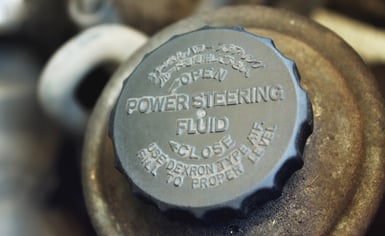3 Main Types of Technologies In EPS Systems Today
 As more innovations in electronic power steering are implemented today, power steering shops and rebuilders are forced to address their knowledge of the various electronic systems. We know that EPS is the future of power steering and that our shops need to be prepared to service EPS, so the first step is getting familiar with the different types of technologies in EPS systems that are entering your shop.
As more innovations in electronic power steering are implemented today, power steering shops and rebuilders are forced to address their knowledge of the various electronic systems. We know that EPS is the future of power steering and that our shops need to be prepared to service EPS, so the first step is getting familiar with the different types of technologies in EPS systems that are entering your shop.
In this blog post, we'll go through the most common types of technologies in EPS systems as well as the features they provide. Keep reading for your introduction to the differences between electronic power steering systems.
Common Technologies in EPS
1. EPS Systems
While they can vary a little system to system, electronic power steering in general tends to be considered the most efficient type of power steering. An EPS system doesn't require any hydraulic pressure, and therefore it conserves the energy a hydraulic system would take to power the motor. At this point in time, it's important to remember that EPS is a technology that's still in the early stages of development, and we'll continue to watch and learn more about it as it becomes more widely accessible and adopted.
The electric motor that powers an EPS system might be located in the steering column or mounted directly to the steering gear. Electronic sensors measure how much steering power is needed on various terrain, lessening the strain and effort it takes for the driver to turn the steering wheel. There are various assistant technologies that can easily be paired with a standard EPS to further enhance the driver's experience. EPS systems are lightweight and highly efficient.
Some drawbacks associated with standard EPS include limited power due to 12V electric power supply as well as increased repair and replacement costs.
For more information about the future of EPS technologies, check out our recent blog post on the advancements you're about to be seeing a lot more of.
2. EHPS (ELECTRO-HYDRAULIC pOWER sTEERING)
As opposed to an EPS system, an EHPS system is made of hybrid technology that combines electric and hydraulic power. In the past, HPS systems generated hydraulic pressure with a belt-driven pump, but these systems have fallen out of favor due to low efficiency. The electric pump was added to create EHPS systems with better efficiency in transmitting hydraulic pressure. This power conversion takes place within the steering rack, though the hydraulic pump is driven by an electric motor that is mechanically separate from the engine. One drawback of the EHPS technology is an increased number of components to deal with and service as a trade-off for increased efficiency.

Other beneficial features of EHPS include:
- An electric pump that doesn't necessarily lose power if the engine is shut off.
- Steering angle sensors within the pinion that detect information about how the driver turns the wheel. This information is used to adjust the amount of steering assistance provided. Higher power assistance is provided at low and idling speeds for a more comfortable driving experience.
- A system that requires no external lubrication and minimizes the amount of hydraulic fluid required (though this fluid should still be changed at appropriate intervals).
3. EPAS (Electric Power Assisted Steering)
Finally, EPAS systems are another electric power steering option. Electric assisted systems require no pumps or fluid to operate. Instead, an electric motor and torque sensor are mounted inside the steering column, and the torque sensor monitors the force of applied to the steering wheel. These signals are transmitted to the ECU where the motor delivers the correct amount of assistance to the steering rack. This method means that drivers feel less feedback from the steering system. Some manufacturers have created a feedback loop to compensate for this less of feeling.
Vehicles with EPAS systems installed reportedly see a better fuel economy due to decreased loss of engine power. EPAS units are small and compact, battery powered, and save on the weight and fluid mess that accompanies hydraulic systems.
What It Means To Service Technologies in EPS
Depending on the type of electronic power steering system you're dealing with, different tests are necessary to determine power steering issues, both mechanical and electrical. Steering issues may present in many ways, regardless of the type of EPS technology you're dealing with. Some examples of steering symptoms include heavy steering, imbalanced steering right to left, steering effort that doesn't decrease while driving, knocking sounds when steering, and noise or vibration in the steering wheel. A common way to diagnose EPS failure points is through an onboard or simulated diagnostic test with OBD II Scanners. However, additional methods of diagnosing and servicing these problems are more dependent on the different technologies in EPS. Testing the torque sensor, for instance, is a way of diagnosing problems in electric steering technologies, while checking for hydraulic fluid leaks is relevant for hydraulic systems. The best ways to prepare for the various EPS technologies that may enter your shop are to get to know the mechanics of each system and to find an experienced partner in the power steering arena that can address your needs and questions along the way.


